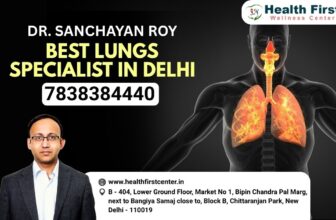
Medical esthetics is a rapidly growing field that offers numerous benefits to patients seeking to enhance their appearance through minimally invasive procedures. However, like any medical practice, it comes with its own set of risks and potential complications. Understanding how to handle these complications is crucial for practitioners to ensure patient safety, maintain trust, and achieve the best possible outcomes.
Common Complications in Medical Esthetics
- Bruising and Swelling
- Causes: Often a result of needle injections and can be exacerbated by certain medications or supplements.
- Management: Apply ice packs immediately after the procedure, advise patients to avoid blood-thinning medications prior to treatment, and consider the use of Arnica to reduce bruising.
- Allergic Reactions
- Causes: Allergic reactions can occur from the injectables themselves or from the anesthetics used during the procedure.
- Management: Have emergency medications like antihistamines and epinephrine available. Conduct a thorough patient history to identify any potential allergens beforehand.
- Infection
- Causes: Bacteria can enter the skin through injection sites.
- Management: Ensure a sterile environment, use proper aseptic techniques, and prescribe antibiotics if an infection is suspected.
- Nodules and Granulomas
- Causes: These can form from dermal fillers, particularly if the product is injected too superficially or if there is an immune reaction.
- Management: Use hyaluronidase to dissolve hyaluronic acid fillers if necessary. For non-hyaluronic acid fillers, corticosteroid injections may be needed.
- Tissue Necrosis
- Causes: Can occur if a blood vessel is inadvertently occluded during an injection.
- Management: Early recognition is critical. Immediate treatment with hyaluronidase for hyaluronic acid fillers and massaging the area can help. Hyperbaric oxygen therapy may be beneficial in severe cases.
- Blindness
- Causes: A rare but serious complication typically associated with filler injections around the eyes and nose.
- Management: Immediate cessation of the procedure and referral to an ophthalmologist. Retrobulbar injections of hyaluronidase can be considered in cases involving hyaluronic acid fillers.
Preventive Measures
While managing complications effectively is essential, prevention is always better than cure. Here are some strategies to minimize the risk of complications:
- Patient Selection and History
- Conduct a thorough patient history to identify potential risk factors.
- Assess patient expectations and ensure they are realistic.
- Proper Technique
- Stay updated with the latest techniques and guidelines.
- Use the appropriate type and amount of product for each procedure.
- Sterile Environment
- Maintain a sterile workspace to prevent infections.
- Use proper aseptic techniques during all procedures.
- Informed Consent
- Ensure that patients are fully informed about the risks and benefits of the procedure.
- Obtain written consent before proceeding.
- Emergency Preparedness
- Have a well-stocked emergency kit on hand.
- Train staff on how to handle emergencies effectively.
The Importance of Proper Training
One of the most effective ways to prevent complications is through comprehensive and high-quality training. Proper training ensures that practitioners are well-versed in the latest techniques, understand the anatomy and physiology involved, and are prepared to handle any complications that may arise.
Esthetic Skin Institute: A Leader in Medical Esthetic Training
For those seeking to enhance their skills and knowledge in medical esthetics, Esthetic Skin Institute (ESI) stands out as a premier choice. ESI is nationally recognized as the #1 choice in medical esthetic training and certification. Since 1997, ESI has been offering intensive hands-on workshops that allow medical professionals to become proficient in a wide range of procedures.
At ESI, students can obtain certification in various medical esthetic techniques, including:
- Botulinum Toxin A (Botox® Dysport® and Xeomin®)
- Dermal Fillers (Restylane®, Juvederm®, Restylane Lyft®, Restylane Silk®, Radiesse®, Belotero®, Voluma®)
- Sculptra®
- Sclerotherapy
- Carboxy Therapy
- Mesotherapy
- Chemical Peels
- Microdermabrasion
- PRP (Platelet Rich Plasma)
- PDO Thread Lift
- Laser, Pulsed Light, and energy-based equipment
ESI’s training programs are designed to provide medical professionals with the knowledge and skills they need to perform these procedures safely and effectively. The institute’s emphasis on hands-on training ensures that students gain practical experience under the guidance of experienced instructors.
Conclusion
Handling complications in medical esthetics requires a combination of knowledge, skill, and preparedness. By understanding the common complications and their management, practitioners can ensure better patient outcomes. However, the best way to avoid complications is through proper training. Institutions like Esthetic Skin Institute provide the comprehensive training necessary to equip medical professionals with the expertise needed to perform procedures safely and effectively. Investing in quality education and continuous learning is essential for success in the dynamic field of medical esthetics.







